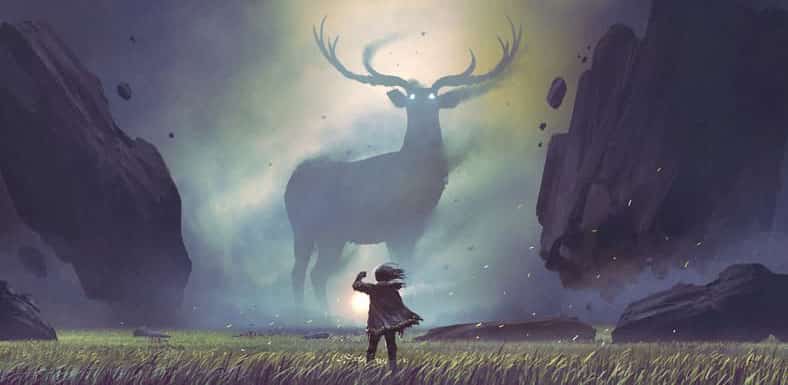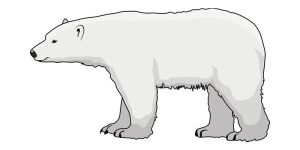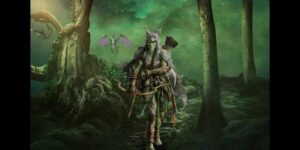In Dungeons and Dragons 5e, the druid class is divided between those who focus on elemental spells (Circle of the Land) and those who transform into beasts (Circle of the Moon). Though all druids have access to elemental spells, The Circle of the Moon carries a primal ferocity. These characters aren’t necessarily zany old spellcasters poking around the forest—they’re shapeshifting hunters and warriors.
Therefore, an interesting character build should blend wisdom with ferocity. Consider the following elements.
- Choose a race with high Wisdom and Dexterity modifiers
- Know your basic druid abilities and build
- Find animal shapes that are both strategic and connected to the story
- Choose spells that compliment a melee shapeshifter
If you’re interested in a premade island pirate adventure to test out your new druid, check out Dead Man’s Tale below.
Choose a race with high Wisdom and Dexterity modifiers
Wisdom should be your highest score. Basically, everything revolves around Wisdom for a druid, from the spell save DC to your casting ability. Therefore, an optimized build should focus on Wisdom. As a character, a druid should lean into this during gameplay. Perception, Survival, Insight and Animal Handling are multifaceted skill checks that rely on Wisdom—and you’re the person that dominates these rolls!
However, I like to add Dexterity as a second choice for its all-around benefit. Firstly, having a basic armor class that most druids lack could come in handy. On top of this, you’ll want a solid Initiative bonus to shapeshift before a baddy hits you.
Races that fit this mold well are elf (especially wood elf), aarakocra (bird folk), firbolg, goblin, halfling, tabaxi, shifter and kenku. Maybe try a human as well for their versatility and bonus feat.
I like to use racial features as a basis for how I play the druid. For example, I could play a drow and set my Wisdom as my highest score. Even though they don’t offer a Wisdom bonus, the Dexterity bonus would give me feral speed to my shifting. Then, choosing Circle of the Moon would be connected to my darkness, and I could choose beast forms like giant spider or giant hyena to fit the theme.
Know your basic druid abilities and build
Druids typically come with some basic weapons, such as a sling, staff, shortbow or even scimitar, but we aren’t too worried about weapons. Perhaps a sling could be fun and add to the character’s primal nature. My Armor Class will be on the low side, with my Dexterity modifier and basic leather armor. As I shapeshift, the armor will need to come off anyway, so, again, whatever.
A druidic focus can also be used to cast spells, perhaps a strange branch, tooth or river stone. Along with this mystical item, I’ll have an herbalism kit and understand the druidic language. As primal and tough as this druid is, I’m gonna keep that inner nature nerd alive.
Finally, I’ll need to choose two proficient skills. It’s a hard choice, but I’m looking at Perception and Survival. This character will have a primal nature, and these two fit that characteristic best.
Related Posts:
Guide to Building an Arctic Druid: DnD 5e
| Guide to Building a Ranger Hunter: DnD 5e
|
Find animal shapes that are both strategic and connected to the story
Now, we get to the fun stuff. At level 2, I learn Wild Shape—my shapeshifting ability. At first, I’ll be able to shift into land-dwelling creatures of ¼ CR. This would be a wolf, giant frog, panther, giant badger and other creatures with no swim or flying ability.
At level 4, the ability upgrades to creatures with swimming and a ½ CR. We’re talking crocodiles, reef sharks and, one of my personal favorites, giant crabs.
Finally, at level 8, I get a flying creature at 1 CR. An example would be a giant eagle.
The Circle of the Moon Difference in Shifting
Of course, that’s for every druid. Those who fall into The Circle of the Moon are shifting specialists. When I choose this circle, I get a shortcut to creatures with a CR rating of 1. I’m still forced to follow the swimming and flying guidelines, but each of my beast forms will be far stronger. Also, I’ll gain the added benefit of shifting as a bonus action instead of a standard action.
As I noted with the drow example, a giant hyena and giant spider are awesome choices. The hyena is a large tank with plenty of hp, and the spider can shoot webs and crawl up walls. Other examples include a dire wolf, tiger, brown bear, giant toad, lion and a giant octopus.
After some time, I’ll get to level 6 and the CR of my shifts will be 1/3 my druid level. In other words, I’ll be shifting to creatures with a CR of 2 and growing from there. These creatures would include allosaurus, giant boar and giant constrictor snake. But seriously, an allosaurus?
As you can see, there are numerous possibilities, with unique features and abilities that go beyond battle. Remember, there’s an element to this that states your character must see the creature before they can transform into it.
Choose spells that compliment a melee shapeshifter
Druids aren’t spell blasters the way wizards and warlocks can be. Their magic is more subtle, and I intend to use it to that benefit.
Cantrips like poison spray (1d10 poison damage) or thorn whip (1d6 piercing, pull 10 feet) can offer me a quick and handy damage dealer if I need one. I like the idea of placing both my fists together in front of my mouth and blowing the poison spray like a frog. But I’m a weirdo. Secondly, I would choose mending or druidcraft for something useful during the story. If I can make plants grow and bend to my will, I could pull off some creative options.
For 1st level spells, I’ll choose an array of helpful options. Most of my spells will come from this list, so I’m thinking versatility is key. Cure wounds (heal 1d8 +Wis) seems obvious, for me and my allies. Fog cloud is another useful option, impairing the vision of my opponents in a 20-foot radius while I shift. Animal friendship only seems fitting, and speak with animals as well, for that matter. Thunderwave (2d8 thunder) could be useful for pushing enemies 10 feet away in a pinch.
2nd level spells should include a similar combination of effects and abilities. Moonbeam (2d10 radiant) is an obvious damage dealer that sticks around on the field. Because I’m on the naked side, barkskin (AC at least 16) is a solid candidate. On the primal side, I could choose find traps and pass without trace to give him a hunter aesthetic.
And there we have it. How did you build your Circle of the Moon druid?
Related Posts:
Guide to Building a Druid Circle of Spores: DnD 5e
| Guide to Building a Druid Circle of Fire: DnD 5e
|







As far as I can tell Barkskin is only available to Land druids not Moon druids. Is this the case?
Hey Angus!
Nope, fortunately Barkskin is a level 2 Druid spell, which all druids can learn. However, Circle of Land druids learn an extended spell list connected to their chosen environment. So, the Circle of Land druid who choses the forest gains barkskin, but it doesn’t count against the spells they can prepare for the day.
Hope this helps.
I guess Constitution instead Dexterity is better because it helps to keep the Concentration in spells casted before you shift.